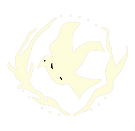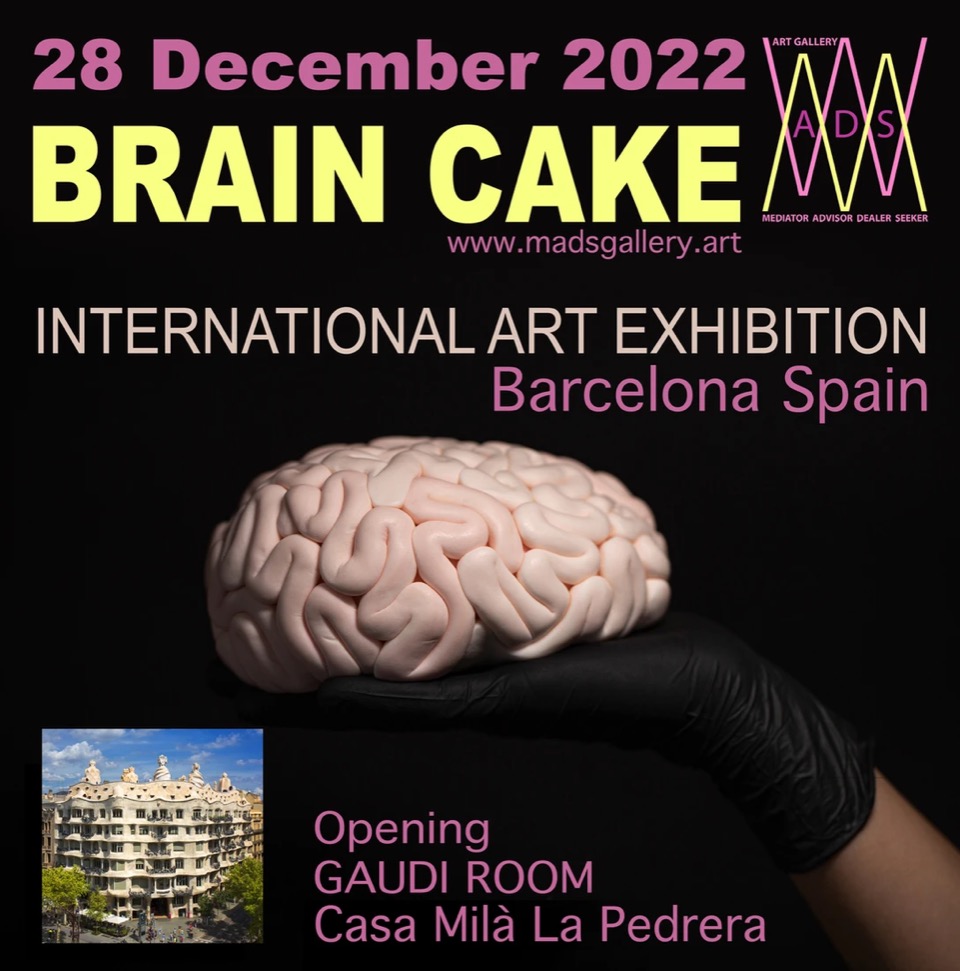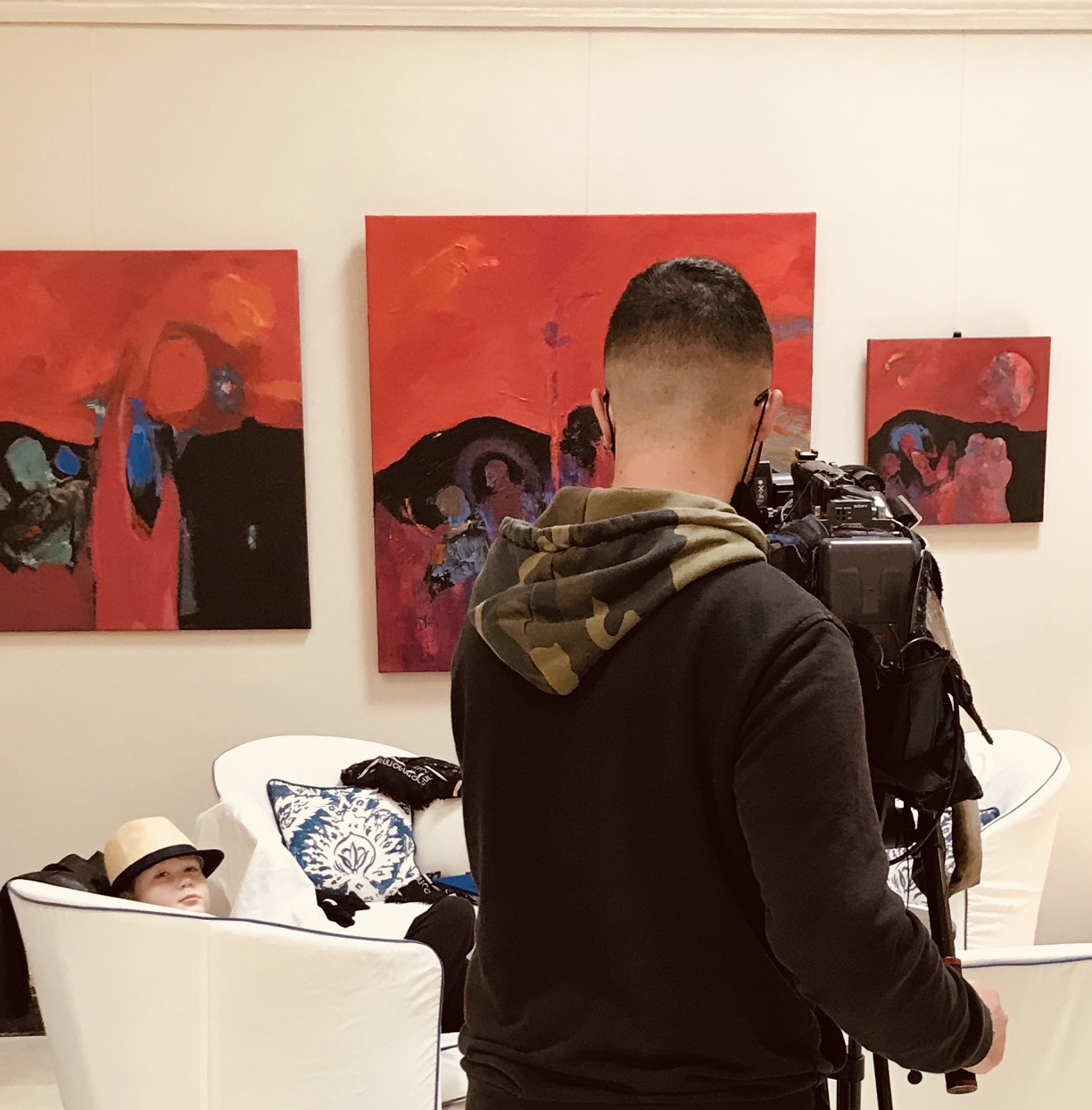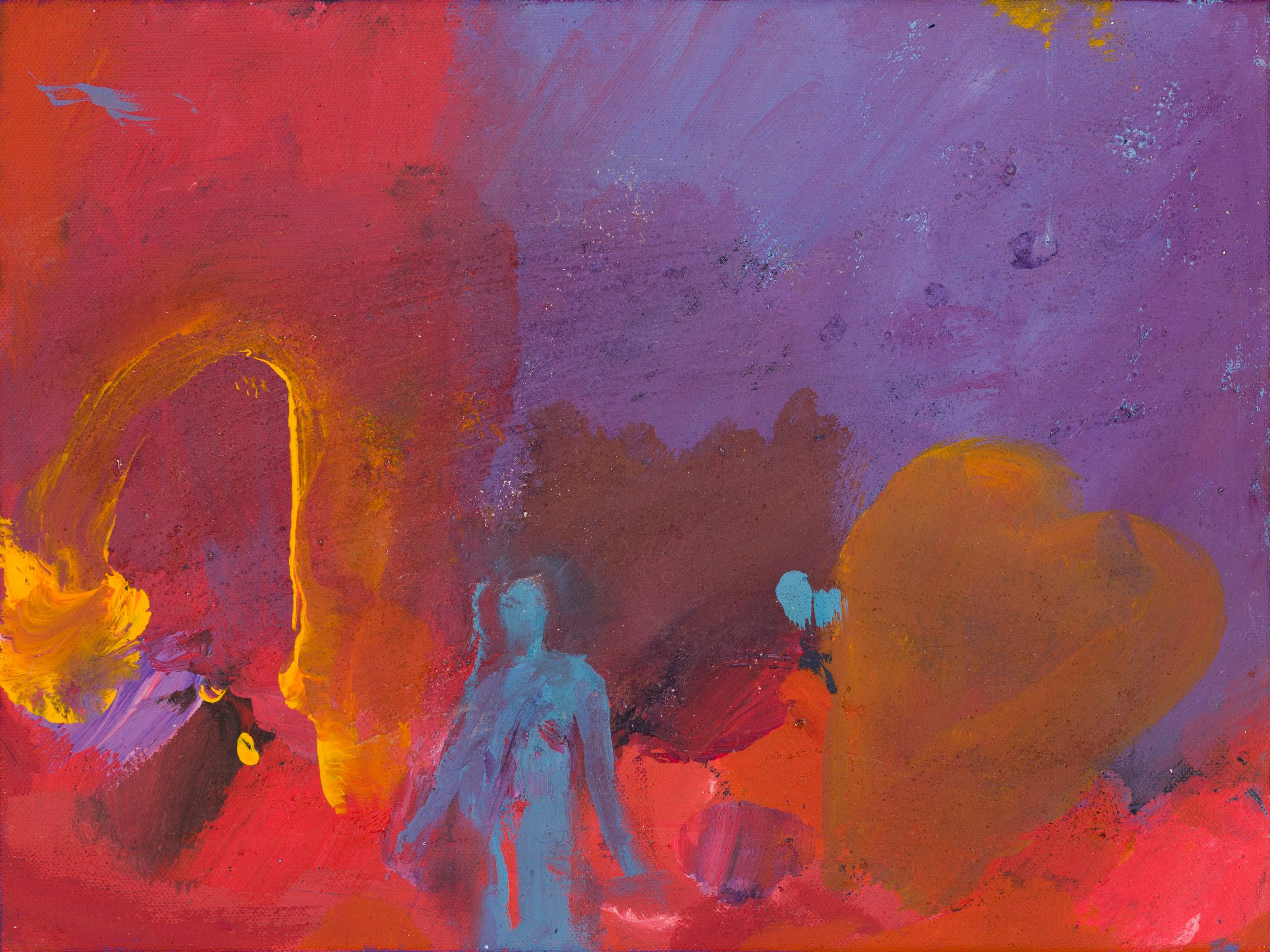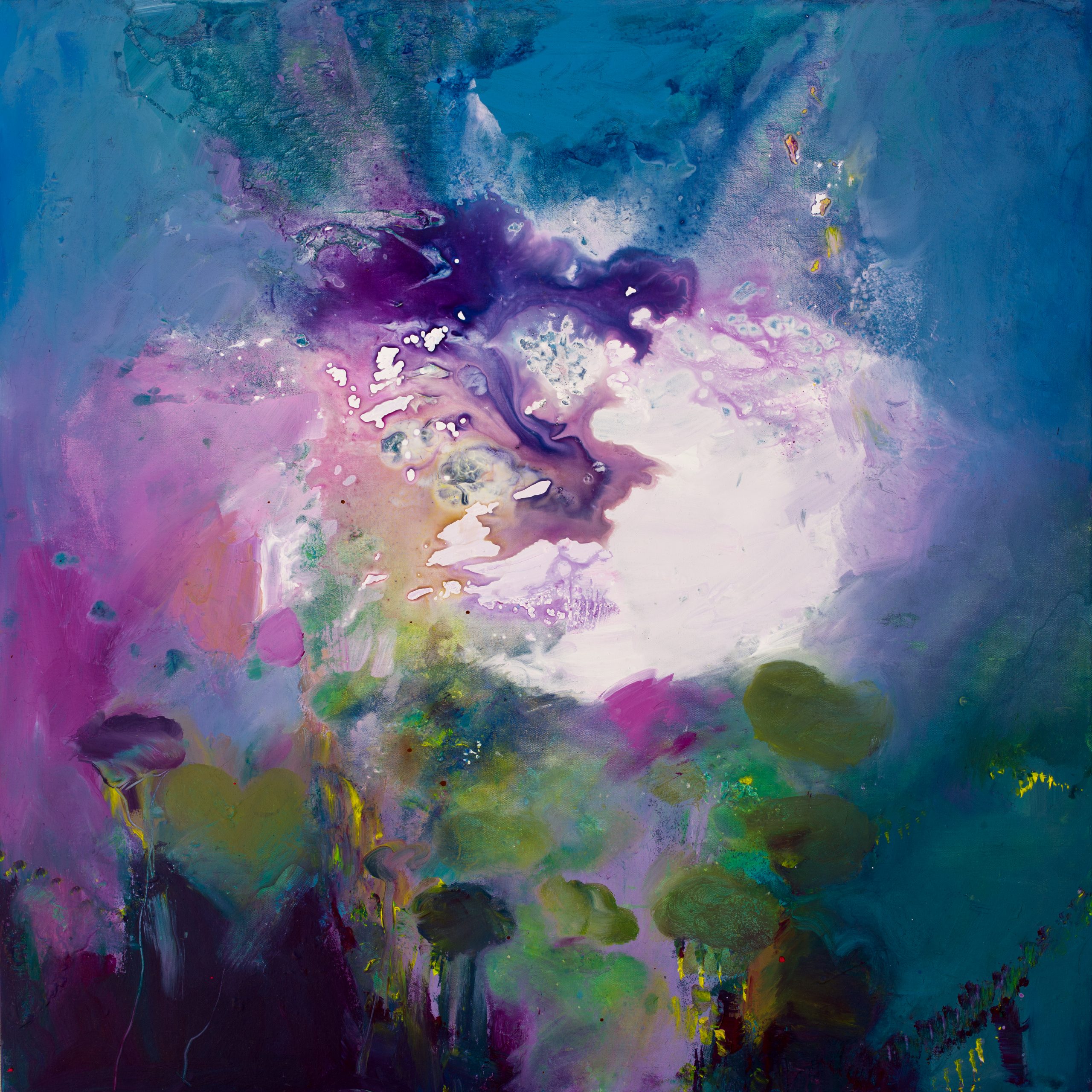
RICHARD ENGLAND – ANGELS FALL FIRST
WHILE I IN SHADOW DWELL I STRIVE TO CRACK THE CLOUDS TO FIND THE SUN
ANGLES FALL FIRST.
Ta Pilar Chapel, Valletta Curator Christine Xuerub Seidu
“Art must do something more than give pleasure; it should relate to our own life so as to increase our energy of spirit”.
Kenneth Clark
While there is little doubt that man today lives in an age of celebration we must admit that this is unfortunately also a time of great loss. Scientific progress, communication processes and instantly available information remain outstanding celebratory achievements. On the other hand it is also true that modern man lives under a constant, hovering cloud of threat, fear and doubt. Moreover what has also been severed is man’s umbilical relationship with nature, its canons, rules and milieu. Also stunted are most realms of the mythical, magical and spiritual. The famine of this age is that through this alienation we have lost not only the connection and relationship between man and nature, but also the latitudes and longitudes of the paths and routes to the sacred; which ironically featured so strongly in the lives of our ancient forefathers. Einstein’s words “the ancients knew something which we have forgotten” ring deep and true, as does T.S. Eliot’s question “Where has all the wisdom gone lost in knowledge?” In this era where price features as a more important factor than value, it is left to those enchanted rare artists who through their work restore to us these lost qualities and thus contribute towards the reanimation of the spiritual aspects and sacrality of humanity. Art, let us remember, if it is successful, must, as expressed in Diderot’s words “first move” and then “astonish”. These artists of enchantment have the capacity, through their work, to re-enter the lost realms and regions of dreams, touch spirituality and therefore reach the rarified ecstasy of divine ground, for as Ouspensky has told us “true art is the communication of ecstasy”.
Anna Nightingale is such an artist. Her canvases may be termed “lanterns of the soul”, for they are paintings not only to be looked at, but more so to be looked into; colourscapes which illuminate the spirit; much needed antidotes to our grey-toned contemporary life style. Yet her gift of transcendence comes at a price to the artist, for as always where light beams, shadow also lurks. In the endowment to viewers of her benedictions of magic, the artist bares and reveals her innermost emotions. My own reading of her canvases is that they are revelations of concealed self-portrait chapters; autobiographies rendered not in words, but in form and colour; languages at times more powerful and comprehensible than aural and verbal discourse. Art, surely, is none other that a communicative medium to express the artist’s inner self. Jackson Pollock reminds us that “every good artist paints what he or she is” and Jean Cocteau also expressed similar thoughts “the work of every creator is autobiography”.
Through her paintings Nightingale transforms herself into a sorceress-cartographer producing palimpsests to reveal to the viewer her personal inner emotional secrets. Memories past and present, passions, loves lost and newly found are transfigured into magical palettes of colour, threaded and woven with masterly technique to metamorphose into diaphanous story-boards baring her intimate psyche. What is exposed is the artist’s struggle between opposing emotions which she harbours in her soul.
Most of her works are apportioned into two distinct sectors; one overlying the other, as if to depict the dialectic of her feelings. The dark lower portions of her canvases, though arenas of amniotic chaos impregnated with turmoil, still display traces of pulsating seeds of embryonic gestation, germinal cell-spores struggling to break through the layers and barriers of ferment to eventually rise purified and emergent. The upper incandescent realms of her paintings may, on the other hand, be read as depictions of attained consummation, when the artist rises, healed from affliction and anguish. Having cracked the clouds and lifted herself from the depths of her shadows to a sun-lit deliverance, she emerges baptised, unhurt and restored, for as Hegel told us, “the wounds of the spirit heal and leave no scars”. Nightingale, in her works is constantly manifesting her struggle to rise from an underworld of knotted moments to a rarified upper-world of re-awakening. The message that is eventually passed to the viewers is that the realization of fullness of joy, can only materialize through pain. To reach the transcendence of Spring, one must necessarily experience the melancholy tones of Autumn. Yet within the amber dolefulness of the latter, lie the dormant traces of expectant re-birth and re-emergence, just as the demise of the earth-bound caterpillar pre-echoes in the chrysalis the birth of the fluttering, airborne butterfly.
The two almost distinct areas of her paintings combine to form a paradoxical union at the meeting point of a central threshold passage, thus enabling the canvases to read as unified harmonious entities. For the artist to map out her personal chronicles of life, her alchemies of alienation and loss, together with her achieved chimerical ecstasies is indeed a courageous act. The paintings reflect the two sides on which the life of the artist is founded; a dualism of thesis and antithesis which ultimately reconciles into a unitary synthesis. It may be said that her canvases navigate and bridge the divergence between apocalyptic obscurity and spiritual luminosity. Betwixt and between these separate realms lie the borders the artist must cross; blurred thresholds which lift her, elated, to ride the rarified canticles of the clouds. Her compositions allow one the privilege to penetrate and visualize their latent music and hear the veiled colours of their lucent skies.
On first viewing Nightingale’s works and the synchronicity of her diverse emotions, I recalled to mind my verses from the 2006 collection ‘Sanctuaries’, in which I had expressed very similar dichotomies and struggles, echoing the artist’s own Dionysian doubts.
“On the other side of this poem
I have forgotten laughter
my sadness moonburned in odours of sorrow
in the landscapes of my mind
in the nevernoons of midnight
in times not measured by the clock
shadows scorch the cleavage of the skies
in sounds I cannot write
wounded flowers of the sun
weeping heaven’s eyes
tears of stone
altars of pain
love misspelled”
The second verse of the poem provides an equally accurate reflection of the artist’s attained horizons of Apollonian awakening.
“On this side of the poem
I am no longer what I was
I come from the darkness
borne by god’s unknown
in a dream flown by angels
my heart is on high
and
rising.”
As an artist who paints not what she sees but what she feels, I read in her works a personal pilgrimage attempting to lift consciousness above conflict. Her canvases pervade passion, power and poignancy, for art remains the objectification of feeling and the exposition of self. It was Arthur Koestler who said “the aim of art is to imbue the world with feeling”. Nightingale is a spirit dancer who surpasses moons of longing and horizons of loneliness to rise and attain her desired destinations of exaltation.
It was Matisse who wrote that “all good art is sacred” to which Hunterwasser later added that “to paint is a religious activity”, and there is more than a hint of sacrality in Nightingale’s work. Light always manifests the sacred and the luminous constantly induces the numinous. Her vertically divided triptychs and her decision to mount her exhibition in the Church of Our Lady of Pilar in Malta’s capital city Valletta, confirms her own belief in the sacrality of her work, for ultimately, her paintings reflect a personal search to find her own post-Edenic stardust. It is this pursuit to transcend the materialistic into the spiritual that provides this sacred overlay. In her constructions of yearning, Nightingale may well be termed a ‘sky-writer of hope’. Despite my initial reading of the works as abstract, I now prefer to think of these aqueous renderings as figurative depictions of the human struggle between darkness and light and the materialistic and the spiritual.
In the shadowed realms of her works, Nightingale seems not to be afraid of her state of disturbance. On the contrary, she almost relishes in her conflict and embraces her vexation as if evoking ‘The Paras’ Prayer’ of author A.J. Quinnel, (pseudonym of the late Philip Nicholson) who was in her teens an early mentor.
“Give me God …
what people refuse to accept from you
I want insecurity and disquietude
I want turmoil …”
Yet in the process of her crossing the threshold to reach the realms of emotional intoxication, she might well be reflecting Romans verses 8:18-19 “consider that the sufferings of the present time are not worth comparing with the glory about to be revealed…”.
In the loftiness of Nightingale’s Arcadian realms of consummate sublimity, Angels may indeed dwell and being the fragile seraphic creatures that they are, risk being the first to fall into her bottomless telluric cauldrons. We shall never know if Angels actually inhabit her chromatic tapestries, for the function of art is not to reveal, but as Francis Bacon has said, “to deepen the mystery”.
In all her works, Anna Nightingale performs as a seer and shaman of our time and through her wordless poems communicates powerful ecstasies of anguish and attained fulfillment. No names or titles are necessary for these are hymns and paeans to the spirit. Each canvas is part of the visual script of the artist attempting to find herself in herself. She, in fact has told us that her paintings “tell a story and uncover none other than the truth”. Her work maps coordinates for us to tread our own emotional and spiritual paths, providing guidelines for us to understand where we have come from, where we are going to and more importantly, where we are. For allowing us to join her on these visionary pilgrimages, we must remain thankful and grateful.
“We need only painters who have the gift to translate their intimate feelings into colour and design”.
Matisse

